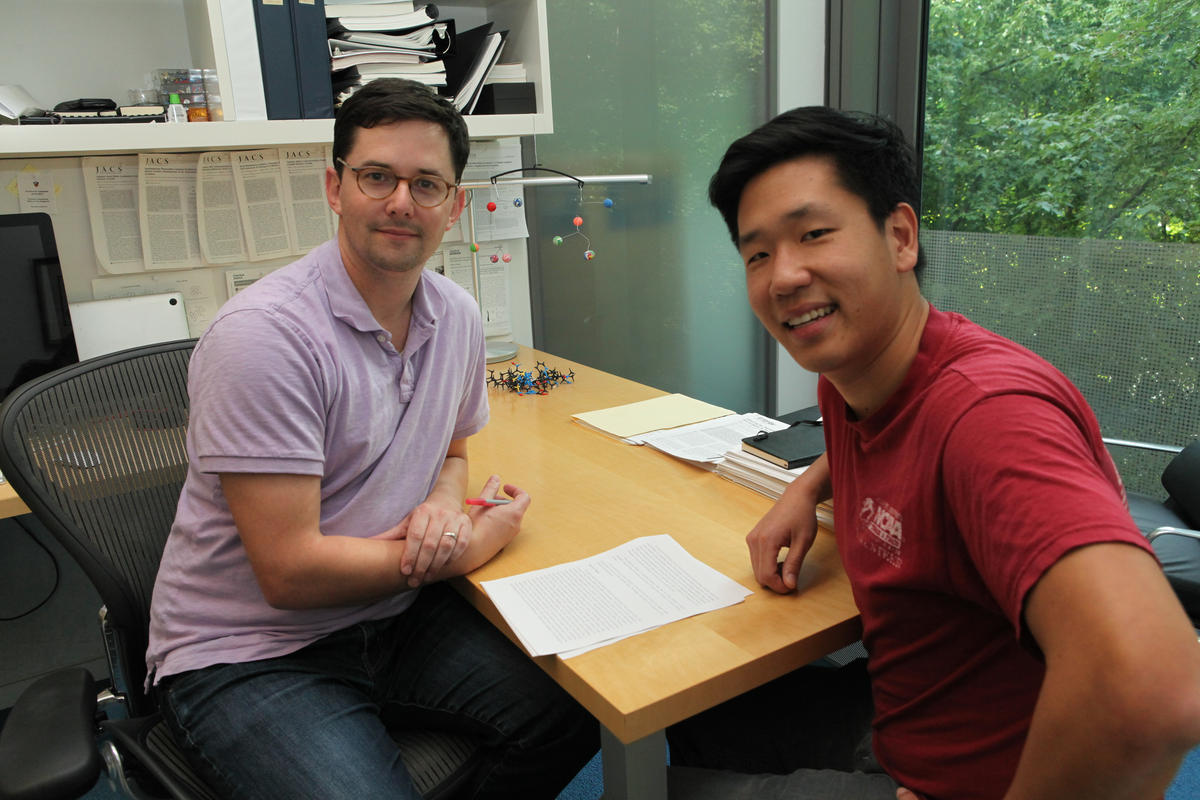New ‘radical’ approach to connecting carbon atoms
A team of researchers at Princeton University has devised an innovative approach to form valuable carbon-carbon bonds from ubiquitous but traditionally unreactive carbon-hydrogen bonds.
Published in Nature, the method offers chemists a new route to build carbon-carbon bonds that bypasses the need for reactive functional groups. Efficient carbon-carbon bond forming reactions are highly sought after and crucial for building molecular complexity in pharmaceuticals and industrial materials.
The reaction was enabled by a technique known as proton-coupled electron transfer, or PCET, which is well established in the inorganic field but underexplored in synthetic settings. “We’re trying to broaden organic synthesis by pulling from inorganic chemistry and biology and bringing in new mechanisms that people can consider when they’re designing reactions,” said Gilbert Choi, a fifth-year graduate student in the Knowles lab and lead author on the study.

For the past few years, research in the Knowles lab has been dedicated to understanding how PCET can be wielded in organic reactions. The general idea hinges on using two independent catalysts – an oxidant and base – to homolyze, or split in half, strong chemical bonds. In this study, researchers set their sights on the strongest bond yet, the nitrogen-hydrogen bond found in compounds called N-alkyl amides.
“We’ve been able to homolyze all types of bonds, but this particular reaction was exciting because amide N-H bonds are exceptionally strong and cannot be homolyzed using conventional approaches,” said Robert Knowles, an assistant professor of chemistry at Princeton and corresponding author on the study.
The researchers used a light-activated iridium-catalyst and a phosphate base to split the nitrogen-hydrogen bond and generate a key radical intermediate. The intermediate in turn breaks a weaker carbon-hydrogen bond present, which then becomes the site for the formation of a new carbon-carbon bond.
The research team successfully demonstrated that their catalyst system worked for a variety of intramolecular reactions, meaning that the starting amide and resultant carbon-carbon bond are attached to the same molecule, as well as the more challenging intermolecular reactions, where the amide and new bond are separate.
This reaction represents a novel pathway for reactivity and opens up a lot of new synthetic opportunities, Knowles said. “We think these methods will enable the development of a wide range of new C-H functionalization technologies.”
Read the full article:
Choi, G. J.; Zhu, Q.; Miller, D. C.; Gu, C. J.; Knowles, R. R. “Catalytic Alkylation of Remote C-H Bonds Enabled by Proton-Coupled Electron Transfer.” Nature, available online on October 12, 2016.
